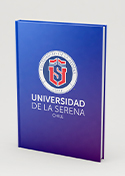Browsing by Author "Wang Zeren Simon"
Long-lived heavy neutral leptons from mesons in effective field theory
(SPRINGER, 2023/01/04) Beltran Rebeca; Cottin Giovanna; Carlos Helo Juan; Hirsch Martin; Titov Arsenii; Wang Zeren Simon
In the framework of the low-energy effective field theory of the Standard Model extended with heavy neutral leptons (HNLs), we calculate the production rates of HNLs from meson decays triggered by dimension-six operators. We consider both lepton number-conserving and lepton-number-violating four-fermion operators involving either a pair of HNLs or a single HNL. Assuming that HNLs are long-lived, we perform simulations and investigate the reach of the proposed far detectors at the high-luminosity LHC to (i) active-heavy neutrino mixing and (ii) the Wilson coefficients associated with the effective operators, for HNL masses below the mass of the B-meson. We further convert the latter to the associated new-physics scales. Our results show that scales in excess of hundreds of TeV and the active-heavy mixing squared as small as 10(-15 )can be probed by these experiments.
Probing R-parity violation in B-meson decays to a baryon and a light neutralino
(SPRINGER, 2023/02/22) Dib Claudio O.; Helo Juan Carlos; Lyubovitskij Valery E.; Neill Nicolas A.; Soffer Abner; Wang Zeren Simon
We propose a search for B meson decays to a baryon plus missing energy at the Belle II experiment to probe supersymmetry with a GeV-scale lightest neutralino (X) over bar (0)(1) and R-parity violation (RPV). We perform analytic computations of the signal branching fractions in the framework of effective field theory, with a single nonzero RPV operator lambda(ij3)''(U) over bar (C)(i) (D) over barj(C) (D) over bar (C)(3) , where i, j = 1, 2. The hadronic form factors are calculated using an SU(3) phenomenological Lagrangian approach for the proton, as well as several hyperons and charmed baryons. Since the decay of the neutralino is kinematically and CKM suppressed in this theoretical scenario, it decays outside the detector and appears experimentally only as missing energy. We detail the analysis techniques at the experimental level and estimate the background in the B+ -> p (X) over bar (0)(1) search using published results for B+ -> K+nu(nu) over bar. Our final sensitivity plots are shown for both lambda ''(113) versus the squark mass m((q) over bar) and lambda ''(113)/m((q) over bar)(2) versus the neutralino mass m((X) over bar 10). We find that the search at Belle II could probe lambda ''(113)/m((sic))(2) down to the order of 10(-8) GeV-2 in the kinematically allowed m((X) over bar 10) range. We also obtain current limits on lambda ''(123) by recasting an existing search interpreted as B-0 lambda(0)(X) over tilde (0)(1), and comment about searches for B+ -> sigma(+) (X) over tilde (0)(1), B-0 sigma(0)(X) over tilde (0)(1), B+ -> lambda(+)(c)(X) over tilde (0)(1), and B+ Xi(+)(c) (X) over tilde (0)(1). In closing, we briefly discuss potential searches at the LHCb and BESIII experiments.
